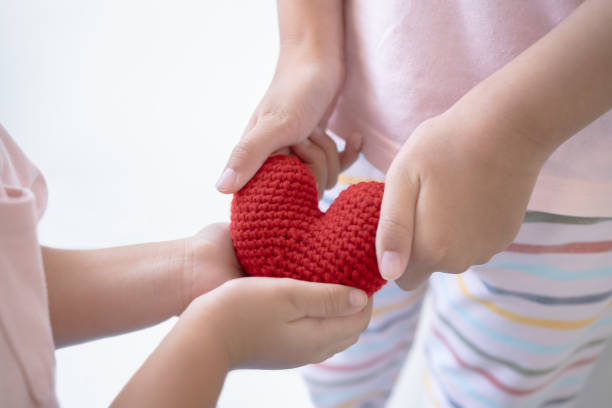There are many types of anaemia, and each one has risk factors that increase the possibility of developing it. For example, we can say that the general causes of anaemia are malnutrition/malnutrition problems, pregnancy, hereditary factors, chronic, autoimmune diseases or treatment with certain drugs.
Factors such as following a diet poor in iron, vitamins or minerals increase the risk of suffering from anaemia; blood loss from Surgery or injury; and long-term or severe conditions such as kidney disease, cancer, diabetes, rheumatoid arthritis, or AIDS; inflammatory bowel conditions (including Crohn’s disease); liver disease; heart failure; and thyroid pathologies.
Likewise, prolonged infections and genetic factors such as a family history of hereditary anaemia increase the chances of developing the disease. For example, women who are pregnant or have a heavy menstrual period, premature or low birth weight babies, and children between 1 and 2 years of age who do not follow a healthy diet and do not supplement with iron supplements are also more likely to be anaemic.
- People who have excluded meat from their diet and do not eat other iron-rich foods, as well as frequent blood donors, are also at increased risk. Finally, older people and adults who suffer from internal bleeding from ailments such as ulcers, haemorrhoids or cancer are more likely to suffer from this ailment.
What are the symptoms of anaemia?
The symptoms of anaemia vary depending on how quickly the disease appears, the severity, and the body’s response capacity, especially at the cardiovascular level. The main ones are:
- Paleness is one of the most characteristic signs and occurs due to the closure of blood vessels in the skin, hands, and feet and the decrease in the concentration of haemoglobin in the blood.
- Asthenia: feeling very tired is another symptom closely linked to this disease.
- Muscular fatigue: appears when making even small efforts.
- Tachycardia and palpitations are constant in cases of moderate or severe anaemia. In contrast, in slow-onset chronic anaemia, the only noticeable sign may be slight murmurs (noise made by blood leaving the heart). If the anaemia is very intense, rapid breathing and even loss of consciousness are added.
- Neurological disorders: refer to vision disturbances or headaches. When the anaemia is very severe, signs of cerebral hypoxia (stunning), dizziness, and even a coma may appear.
- Neuromuscular manifestations: changes in behaviour, headaches, dizziness, visual disturbances, insomnia, inability to concentrate and, sometimes, disorientation.
- Disorders of the menstrual rhythm: the existence of abundant rules is the most frequent cause of anaemia in young women, although it is usually moderate anaemia. However, a decrease in the menstrual rhythm is generally seen when the anaemia is more intense. What happens is that faced with the drop in haemoglobin, the body reacts by decreasing, or even cancelling, blood loss.
- Kidney disorders: retention occurs that can cause the appearance of oedema or swelling in the legs.
- Digestive disorders: consist of a lack of appetite, nausea and, sometimes, constipation.
What complications can it cause?
Severe or prolonged anaemia can cause damage to the heart, brain, and other body organs because the blood cannot contain enough oxygen to the tissues. For example, this disease can cause arrhythmias that, over time, can damage the heart and lead to heart failure.
Anaemia can also weaken people with cancer or HIV infection and make it harder to treat them. And in severe cases, it can be lethal.
If left untreated, severe iron deficiency anaemias can lead to infections and growth problems in children and infants. During pregnancy, iron deficiency anaemia is associated with premature births and low birth weight babies as long as they are not treated.
How is anaemia diagnosed and treated?
Anaemia is typically diagnosed with a medical examination and a blood test that includes complete blood counts to determine, among other values, the levels of haemoglobin, hematocrit and red blood cells, as well as their colour and average size. The parental history of the patient is also taken into account. Additional tests may include endoscopy, colonoscopy, and ultrasound.
When the disease is diagnosed, the doctor will prescribe the appropriate treatment to maximise the red blood cells or the concentration of haemoglobin in the blood.
In the case of anaemia due to vitamin or mineral deficiency, the doctor will prescribe the oral intake of iron, vitamin B12 and folic acid supplements. When due to significant blood loss, a transfusion will be performed. And in more specific cases (such as hereditary syndromes), bone marrow transplantation may be considered. In addition, you must consult your primary care doctor or specialist (haematology specialist) to indicate the most appropriate anaemia treatment for your case.
Another goal of treatment may be palliation of the underlying disease or underlying cause of the anaemia. For example, the specialist may prescribe medications such as oral contraceptives to lighten menstrual flow, antibiotics to treat ulcers, or Surgery to remove polyps or tumours.
Why is iron important for health?
Iron is an essential micromineral for the body, as it is involved in forming haemoglobin, red blood cells, and certain enzymes. In addition, our body accumulates iron stores in the liver, spleen and bone marrow.
Nutrition experts recommend consuming at least 8 milligrams of iron per day for men and postmenopausal women and 18 milligrams of iron per day for premenopausal women. Vegetarian men and women should almost double these amounts since the body absorbs iron from plant sources to a lesser extent than in animal tissues.


